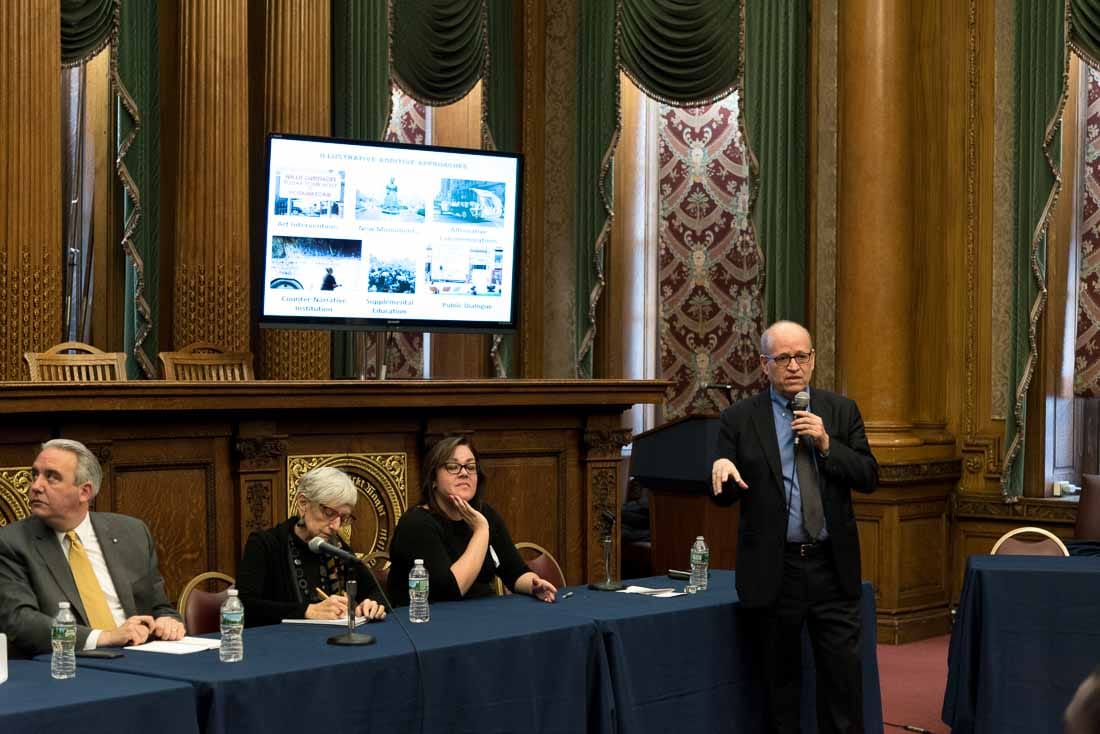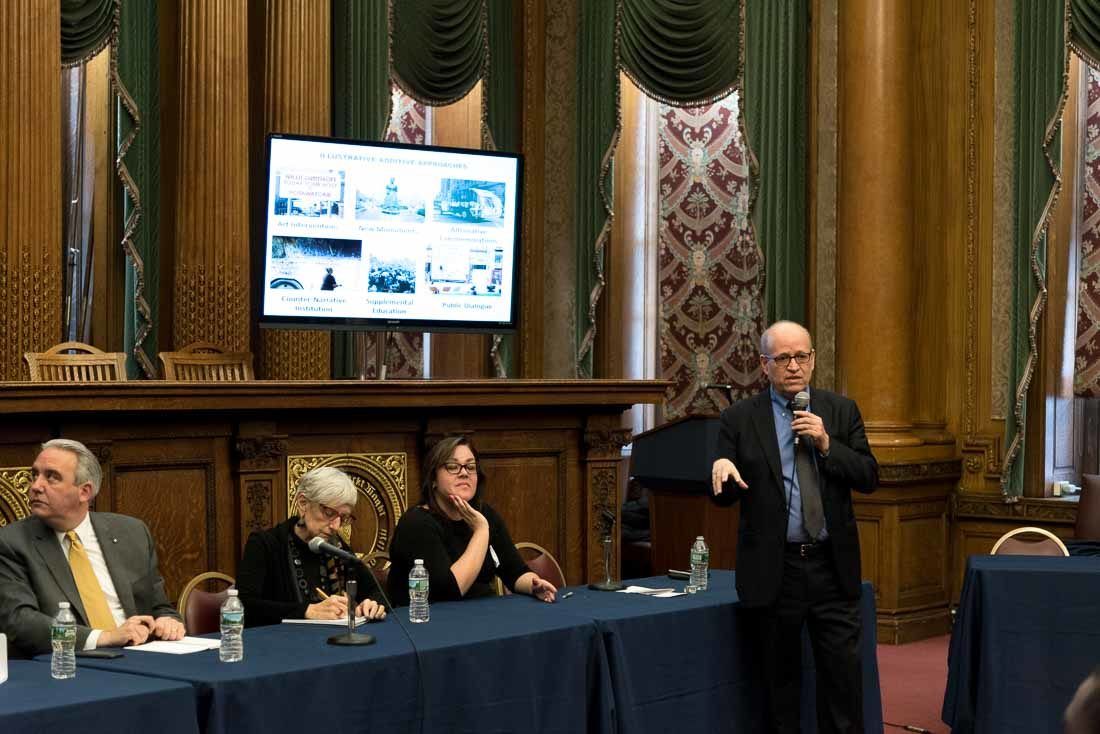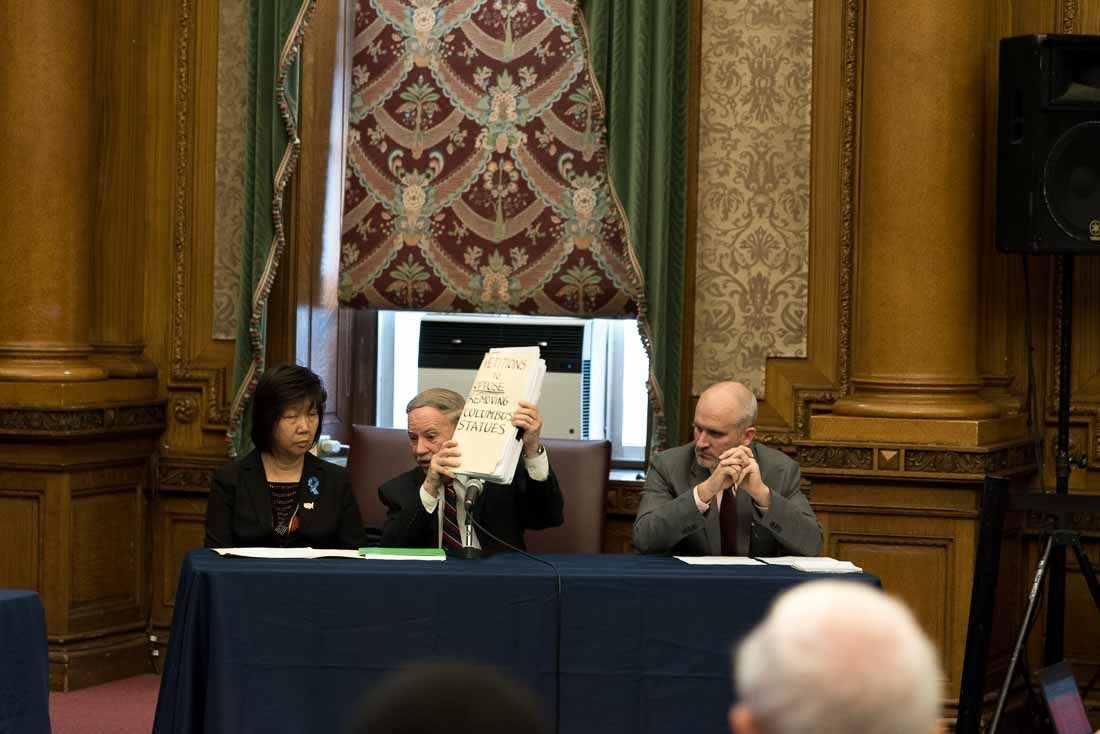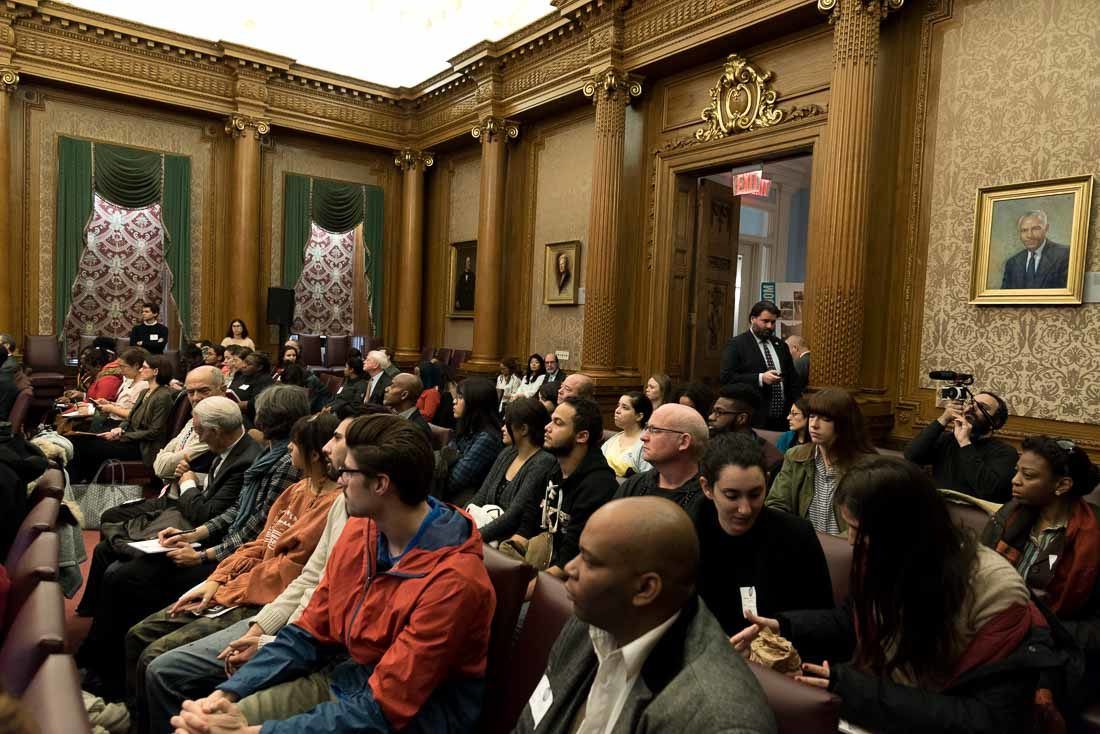Debate Over Public Monuments and Columbus Statues Continues in Brooklyn


BOROUGH HALL – Politicians, teachers, art historians, feminists, futurists and more turned out to speak on the role of public monuments in New York City. The Mayoral Advisory Commission on City Art, Monuments, and Markers held their public hearing for Brooklyn this morning at Borough Hall.
The hearing is the latest in a series, one in each of the five boroughs, in which the commission will hear input from New Yorkers, before creating non-binding guidelines concerning the treatment of monuments before the end of the year.
Statues of Christopher Columbus—most notably the one in the center of Columbus Circle—and the East Harlem statue of controversial surgeon J. Marion Sims were the center of debate.
Commissioner of Cultural Affairs Tom Finkelpearl, co-chair of the commission, opened the hearing by rooting the conversation about monuments in New York in the larger national conversation, from Charlottesville over the summer to Philadelphia’s grappling with the image of an ex-mayor earlier this month.
While many spoke soley about the removal of objectionable monuments, Finkelpearl encouraged discussion of alternate methods of framing their historical significance, from counter-narratives and supplemntal education to educate the public to unheard histories, or alternative commemorations or new monuments to highlight other historical figures.
Mostly however, those present spoke about statues in the absolute terms of removal.
First to speak was State Assemblymember William Colton (D-47), who represents parts of Bensonhurst, Bath Beach and Gravesend, leading off the discussion by strongly opposing the removal of statues depicting Christopher Columbus.
“We’re not just dealing with… pieces of cement, we’re dealing with traditions and emotions,” said Colton, stating that all his constituents—from Italian Americans and Russian Americans to Chinese, Pakistani and Bangladeshi communities—all feel their traditions shouldn’t come under attack.
“There’s nobody who has no flaws whatsoever,” said the Assemblyman of Columbus. He invoked the oppression of Italian Americans as he described the people who in 1898 raised the money for the monument, which he said “encourages young people to be part of the American Dream.”

“We don’t honor someone because they are perfect, we honor them because of an accomplishment they have made,” said Colton. The Assemblyman presented the commission with petitions against the removal of the statue which he says bear more than 2000 signatures.
Opposing opinions abounded, however, and Brooklynites from all across the borough took their turn to deliver three-minute statements to the commission.
Rose Lyn Tejada, a Dominican student from The Academy of Young Writers, invoked the history of Columbus’ arrival in what is now the Dominican Republic, and the deaths of many native people that came as a result
“He’s no hero,” Tejada said, “If we put a statue honoring him, we’re also honoring the pain he caused the natives.”
She called to mind the pain her mother feels passing the statue in Columbus Circle and thinking back to the ancestors and relatives that were lost.
“For once we have to think about all the races, not just one at a time,” she concluded.

Of course, one of the fears of those who oppose changes to monuments in the city were of a sweeping campaign to change every bit of history that current residents find objectionable.
“Where does it end?” asked John Quaglione, the Republican who narrowly lost the race for the 43rd District City Council seat in earlier this month. “Where does New York City stop the pattern of rewriting history?”
Quaglione said he wanted to speak for all the people he met during the campaign, citing a groundswell of support in Bay Ridge, Dyker Heights, Bath Beach and Bensonhurst—traditionally Italian American strongholds—against the removal of Columbus statues.
Quaglione attacked Mayor De Blasio, accusing him of “punting [a] hard decision to a commission and not taking a leadership role”, and deciding to delay the issue until after the election.
“We shouldn’t even be having these hearings,” he continued, “We should be having a hearing on how many people sleep in the parks at night… We should be focused on people and on moving this city forward and ending this insanity.”
Mya Dosch, an art historian and Brooklynite, was another speaker who favored removal of statues. Dosch is a Ph.D. candidate at CUNY and specializes in public monuments.
“It’s fine to remove select monuments that no longer represent the ideals that we stand for,” Dosch said.
She characterized fears of rewriting history as “hyperbole,” arguing that who the city chooses to celebrate with statues is a reflection of identity framed in the present moment.
“There are dozens of other Italian American innovators who represent us better than Columbus… and the Lenape nation has never been adequately represented in the land that was once theirs,” she said, referencing the Native American tribe that inhabited what is modern day New York
Dosch encouraged the committee to recommend the remove of all 5 Christopher Columbus statues in NYC parks, as well as the J. Marion Sims statue.
“This is a moment to redefine who we are as a city,” she concluded.
The commission will continue to hear public testimony, with hearings scheduled for Manhattan, The Bronx and Staten Island on November 22, 27 and 28, respectively




